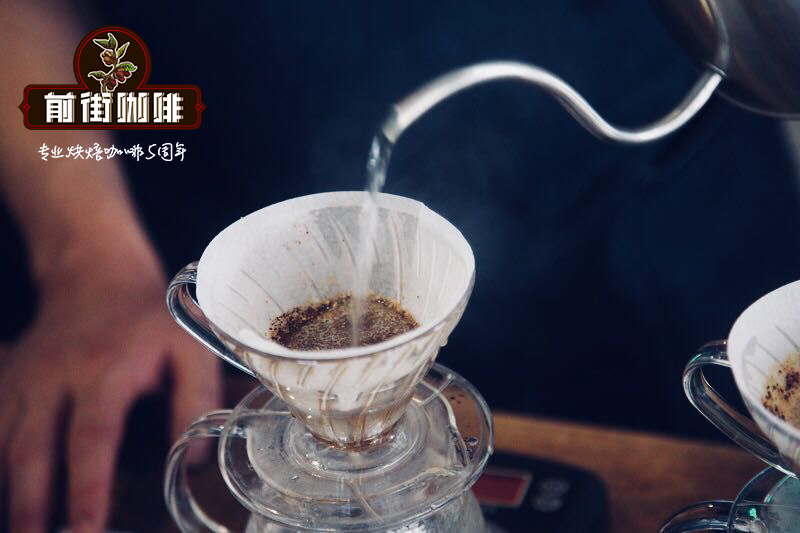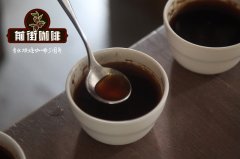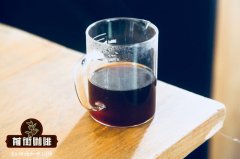How do you make Hawaiian coffee? what are the producing areas of Hawaiian coffee?

Professional coffee knowledge exchange more coffee bean information please follow the coffee workshop (Wechat official account cafe_style)
With regard to Kona, coffee drinkers have heard of his acidity and rich acidity, but in fact, the term Kona can only represent coffee beans produced in the state of Hawaii. Their quality and taste vary greatly from product to product, so there is no way to accurately describe it, because different estates / companies may grow / buy different beans, so the products themselves represent different plant fruits, and the time to harvest coffee beans is different. The processing and screening process of coffee beans after harvest may also be different (especially when the screening process will determine the grading of coffee beans, extra fancy, fancy or estates), and then, most importantly, the way and degree of roasting will bring a different taste.
For higher-quality Kona, you usually have to look for smaller Local companies or farm direct websites. Although the price of Kona coffee beans provided by these estates / small companies is sometimes as high as twice that of supermarket products, the quality is much better.
The volcano on the big island is the goddess of fear and love of the local residents, afraid of the goddess's anger, and her home is torched instantly, but she also loves the tears left by the goddess after anger, high temperature and thick magma, which forms a special soil after cooling. it has become one of the unique conditions for the growth of "Kona Coffee". Plants can't grow without sunshine, but coffee beans also need to be given proper shade. Hawaii, which is surrounded by the sea, because the sea adjusts the climate, the sun in the morning becomes soft through moisture, and by noon, the water vapor in the mountains condenses into fog, protecting the tree species.
There are no high mountains on the island, and the white clouds in the sky are surging with the wind, forming a sunshade that switches on and off automatically with the rhythm of nature. In the coffee country, "Kona Coffee" is like an aristocratic girl, most gently cared for by nature.
"KONA Coffee" is not a native plant of the big island. The earliest records can be traced back to 1813, when the Spaniards planted the first coffee tree, but it really flourished in the 19th century, when the bloodline inherited from Arabica, the three major coffee species in the world. It is not like the thick Italian coffee, nor does it have the coarse mineral taste of Central and South American coffee. The combination of sour and sweet is very mild, and the aftertaste can also taste the aroma of fruit. People who don't like it think that "KONA coffee" is too light, but this "fresh and natural" flavor is unique to "KONA coffee" in the coffee world.
In Hawaii, a pack of 100% pure "Kona coffee" 4oz is about $12, which is a medium-to-high price compared to the average coffee. In Hawaii, 100% individual beans are usually purchased, and some coffee farms offer a taste, which is reassuring to drink after drinking.
Coffee beans grow in a period of time, and the places that have grown this year will not grow again next year, so the branches will grow longer and longer, one at a time, and of course they will mop the floor when they grow a long time. So the whole tree is cut down about every five or six years, but the roots are reserved for it to grow again.
Coffee trees don't really need to be taken care of. KONA Coffee is famous because it is only suitable for growing coffee in the "certain mountain area" of KONA. Partly because of the volcanic soil properties of Hawaii, and partly because of the wonderful weather in KONA, which is sunny during the day but showers begin after noon, these coffee trees can grow well without watering! In addition, kona coffee and Blue Mountain coffee actually use the same Arabica (Arabica) tree species, but because of climate, altitude, soil differences give it a completely different flavor.
Hawaiian coffee is produced in July and August to January every year. However, a coffee tree can produce less than a pound of coffee, which is very rare.
Like other parts of the Hawaiian Islands, KONA Island provides ideal climatic conditions for the cultivation of coffee beans. But the coffee beans produced by that are different, and it has a good reputation as "worldwide coffee". This is probably due to the fact that KONA Island is rich in volcanic black mud with moderate acidity, rich mineral content and suitable water content. And every afternoon, a cloud floats over the island to block out the sun to protect fragile coffee saplings.
What is special about KONA coffee is that each Kona bean is hand-picked to ensure that only the best quality beans can be used in coffee production. In fact, 100% pure KONA coffee is rare and sometimes hard to find. The rarest coffee beans are beads (round beans with a single pod), which account for only 4% and 5% of the total annual output of Kona coffee beans. What is special about beaded coffee beans is that each coffee fruit contains only one coffee bean, while other types of Kona coffee fruit contain two coffee beans.
The Hawaiian coffee on Qianjie is from KONA, and I like the special flavor of KONA coffee very much.
The recommended brewing parameters of Qianjie coffee:
V60ap90 ℃ / 1 15 / time two minutes
Flavor: Mulberry, sucrose
Important Notice :
前街咖啡 FrontStreet Coffee has moved to new addredd:
FrontStreet Coffee Address: 315,Donghua East Road,GuangZhou
Tel:020 38364473
- Prev

Hawaiian coffee how to make Hawaiian coffee? Hawaiian Kona coffee flavor
For more information on coffee beans, please follow the coffee workshop (Wechat official account cafe_style) Coffee plants were first introduced to Hawaii in 1817 by Don Francisco de Paula Marin, the first Spanish consultant under King Kamehameha. The planting was not successful. In 1825, Oahu Mayor Chie Boki introduced coffee from Brazil and planted it in M.
- Next

Which Hawaiian coffee is good? why is Hawaiian coffee popular? How do you drink Hawaiian coffee?
Professional coffee knowledge exchange more coffee bean information Please follow the coffee workshop (Wechat official account cafe_style) the origin of eating coffee is said to have originated from the Ethiopian shepherd Kaldi, one day found that usually lazy sheep suddenly baa excitedly at the delivery of goods, after several experiments with neighboring monks, accidentally found that the red magic fruit in the sack can be soaked
Related
- Detailed explanation of Jadeite planting Land in Panamanian Jadeite Manor introduction to the grading system of Jadeite competitive bidding, Red bid, Green bid and Rose Summer
- Story of Coffee planting in Brenka region of Costa Rica Stonehenge Manor anaerobic heavy honey treatment of flavor mouth
- What's on the barrel of Blue Mountain Coffee beans?
- Can American coffee also pull flowers? How to use hot American style to pull out a good-looking pattern?
- Can you make a cold extract with coffee beans? What is the right proportion for cold-extracted coffee formula?
- Indonesian PWN Gold Mandrine Coffee Origin Features Flavor How to Chong? Mandolin coffee is American.
- A brief introduction to the flavor characteristics of Brazilian yellow bourbon coffee beans
- What is the effect of different water quality on the flavor of cold-extracted coffee? What kind of water is best for brewing coffee?
- Why do you think of Rose Summer whenever you mention Panamanian coffee?
- Introduction to the characteristics of authentic blue mountain coffee bean producing areas? What is the CIB Coffee Authority in Jamaica?

